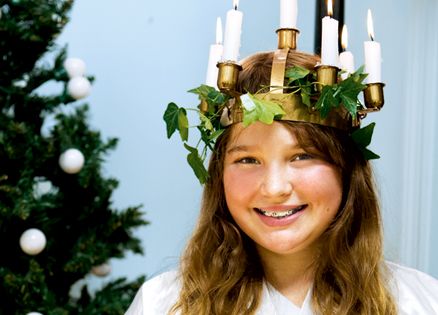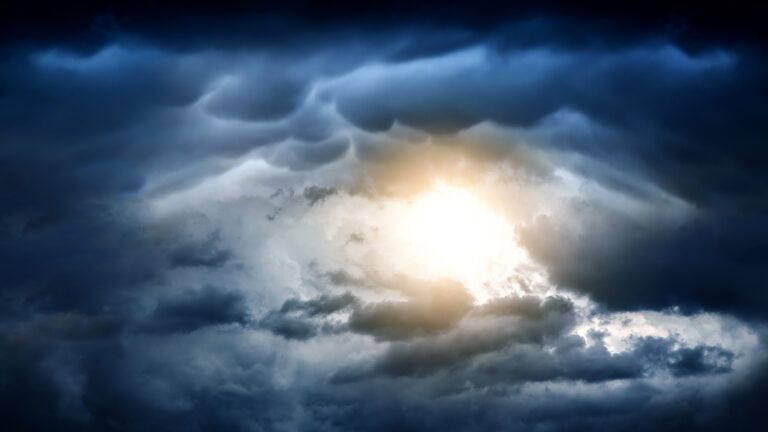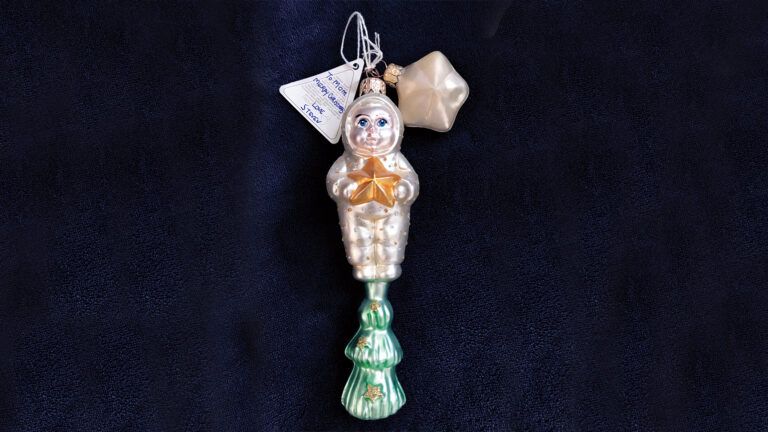Flakes fall gently through the December sky as my daughter, Linnéa, pulls the snow-white gown over her head. The snowplows have made the streets passable enough for us to arrive here at this hilltop village. In the stillness of early December dark, I tie the crimson sash as she brushes her hair in preparation for the crown of candles.
How many dark December days have seen this ritual?
I well remember putting on this same kind of gown as the wind howled outside the windows of our kitchen in Park Forest, Illinois. We were up before sunrise, as we always were on this special day—December 13, St. Lucia Day. My eight-year-old brother, Stephen, and I tried to work quietly, but the giggles got the better of us as we took the saffron buns out of the oven and poured coffee from the electric pot into the china one. That year, the year I was 10, was the first time I was trusted to light the crown of candles by myself.
As soon as the tray was all set, I put a cap of tinfoil on my head. We lit the six candles on the crown on the table. Everything prepared, Stephen clicked on the stereo. We rushed up the stairs. He held the tray while I positioned the lighted crown on my head. We sang with the record as we went down the hall to awaken my parents, a young pastor and his teacher wife, in their bedroom with coffee and Lucia buns. As it had for so many other Swedish families, our Christmas season had begun.
My favorite version of the Lucia story is this: Lucia was a noblewoman in Italy at the end of the third century, when it was illegal to practice Christianity. Many of the faithful hid in catacombs to avoid arrest and execution. Lucia pledged never to marry and to give all her possessions to the poor. At night, she brought food to those hidden in the caves and tombs. Because her hands were full of food, she wore a crown of candles to light her way.
Her wealthy fiancé, angered by her refusal to marry, reported her to the governor. She was arrested and eventually martyred for her faith.
St. Lucia’s name means “light.” Her feast day is December 13, because, according to the Julian calendar, that is the shortest day of the year. Like Jesus’ “feast day,” Christmas, it reminds us that the soft light of hope appears when the darkness is greatest.
The great-grandparents, great-aunts and uncles I remember from Lucia celebrations in Illinois have all passed on, and the tradition has fallen to my own daughter. The year has been difficult for my parents, once the young pastor and his wife. My mother’s health is failing, and my parents recently moved to be near my family here in New York State. My mother is often in pain, and misses many of her dear friends—both those who have died, and those she left behind.
But on December 13, even in the wake of a blizzard, Linnéa and I have driven the 40 minutes from our house and climbed the hill to their retirement village. The gown and sash in place, we put the square of tinfoil on her head, and balance the crown. She takes the tray of Lucia buns and other Swedish pastries and cookies, and quietly we walk down the hall. Just before we arrive at the dining room, I light her candles and nod to the woman by the sound system.
The lights are turned out, and the CD player is turned on. The strains of the song “Santa Lucia” are heard, and the tables of retired folks turn our way. And a young girl with candles on her head again brings people a message of love and hope. As we go from table to table, old times are remembered and new friends are made. In my mother’s eyes, I can see clearly the time she was young. And in the midst of darkness, light returns again.
Read more stories about heavenly angels and angels on earth.





